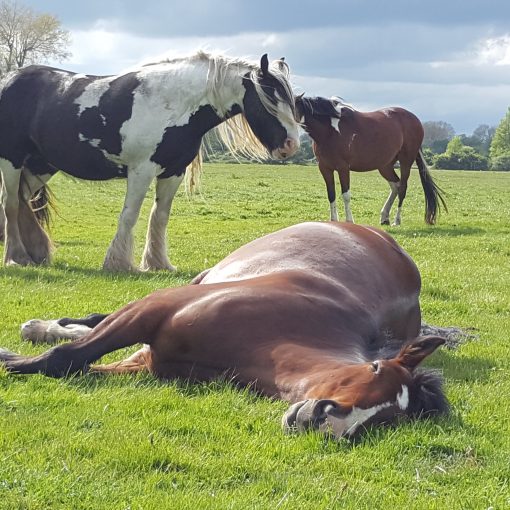The Literacy of Feedback
The literacy of feedback involves an understanding of the conscious and unconscious language within everyday exchanges.
My work, wherever it s undertaken, consistently returns to one topic. The importance of developing a meaningful level of self awareness! Even if it is not the core agenda, it so often rears its head at sooner or later.
Author Tasha Eurich in her book Insight (Pan, 2018) defines self awareness as THE challenge of the 21st century. This resonates deeply with me. So how do we facilitate this edification?
Making it personal
I was a shy child. I generally sought to make myself smaller, preferring not be seen. Venturing forth from this space was rarely a more adventurous than simply wanting to please someone else (usually my parents!). From my chosen place of quiet safety I developed observation led adaptive skills. Skills founded on an intuitive awareness of how others were and the potential effect I had on them. Life and communication was essentially a living risk assessment.
In the language of the Johari window there was a strong intuitive need to reach into my unseen self. That part of me that others saw but perhaps I chose not to acknowledge. Here was a space where I learned to connect with the receipt of my communication and facilitate a comparison against my initial intention.
Much later in my adult life these resources became very powerful tools when I properly encountered horses. From my first encounters I was often drawn to the idea of the damaged horse (you can draw your own conclusions). I could not always put it into words, but these were animals that I reached out to. In these encounters I had keep both myself and horse safe. I could not instruct safe. Safe was something that I had to create, something that I had to embody.
Asking the right question
So I developed a simple measure which I engaged throughout these encounters, this was “what did I do to make that happen?” I learned to look upon the horse’s behaviour as communication; it was their response to my embodied requests for action or states of being. Whether that manifest in them simply turning to sniff my hand, moving their bodies closer, or physically moving away. So often with Athena learners in Equine Facilitated Interactions we talk about the fundamental binary decision to move towards or away from.
I learned that, in time and without pressure, threatened or pained animals would accept me when I established a state of stillness that limited the pressure perceived by them. A non-threatening, non-demanding stillness. I nurtured an idea of “without intention”, for intention carries an unconscious communication that could drive an animal away.
Whether that be an energetic felt sense, or a subtle shift in body language. The key bit is the self-awareness that accompanies that. The consciousness of "how I am" and "how I change."
Herein is the key to the lexicon that underlies the literacy of feedback. For me, this learning quickly reached beyond the stable.
These lessons touch all of life
I have generally found over the years that I can work with most people. An intuitive understanding of how people reacted to me, helped me to work with them. This enabled me to create positive and effective engagements. I am sure there are those who might disagree, we all have our nemeses.
These experiences nurtured for me what Patsy Rodenberg ("Presence", Penguin, 2009) calls the “second circle" of energy, a place of balance exchange, a place of authentic and honest connection.
They also forms the foundation of what I have defined as The ABC of Somatic Presence. This is a cycle that reflects the subtle dance which occurs between two beings, or beings and their environment. It creates and sustains safe, supportive and balanced interactions.
The challenge is finding safe spaces and practices in which we can nurture this literacy of feedback. Without recognition of feedback social awareness simply does not develop. Without this sensitivity we might more be seen as gauche or insensitive. We need to become fluent in the conscious interpretation of that which comes back to us.
Behaviour as communication
I love how NLP talks about the "meaning of communication being the response you get". It is a wonderful invitation to be more curious about how your messages land, or what our behaviour illicites in others. Is there a concurrence between your intention, and the response or reaction that occurs.
Most importantly, what if there is not the desired alignment. Too often we then dismiss these situations as sub-optimal behaviour in the recipient, but what if it is actually their honest and authentic reaction to how we are? What do we do then?
If our message does not land, do we try to understand why, or do we tie ourselves in knots of repetition and justification. Digging ourselves deeper trying to explain what we meant, rather than reflecting the response received. To be open to an understanding of some other clearly, we must step away from ourselves and agenda. Even if a meant well, if others were challenged or threatened in the situation, then the intention was lost.
And from the horses? I learned to be curious, to recognise that the personal act of wanting to help or hug is not actually helping, helping is an empathetic understanding what is needed, and then holding that space.
Our human interactions are the same. How does some person need to receive our message, what language, what medium. How do I need to be to enable them to be their most receptive? It is about a developing the art of maintaining a dynamic adaptive interaction with all feedback received.
There is no one formula to developing this literacy of feedback, but we can all foster an open and objective, empathetic approach to our interactions.





3 thoughts on “The Literacy of Feedback”
Thank you once again for some interesting and useful insights.
Many of us are emotionally insecure when it comes to actually giving “sincere feed back”.
I sometimes do product testing! If I can’t find something constructive to say, I connect directly with the manufacturer instead of posting negative opinions.
I am surprised how many “thank you’s” and unexpected rewards result from honest and helpful opinions.
The other is the focus, not me and my need
“If our message does not land, do we try to understand why, or do we tie ourselves in knots of repetition and justification.” Best question we should always ask ourselves!